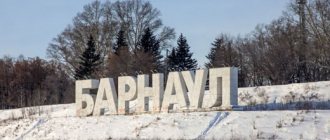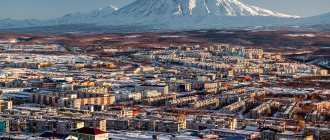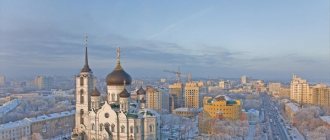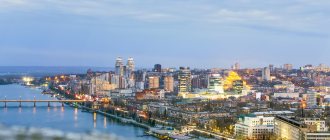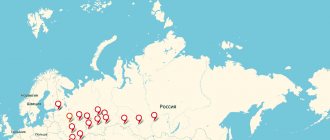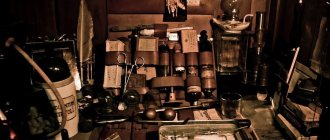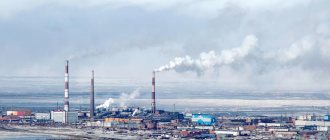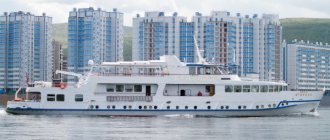This term has other meanings, see Kupavna.
Not to be confused with Novaya Kupavna.
| City Old Kupavna Coat of arms |
| A country | Russia, Russia |
| Subject of the federation | Moscow regionMoscow region |
| Municipal district | Noginsky |
| urban settlement | Old Kupavna |
| Coordinates | 55°48′00″ n. w. 38°11′00″ E. d. / 55.80000° n. w. 38.18333° E. d. / 55.80000; 38.18333 (G) [www.openstreetmap.org/?mlat=55.80000&mlon=38.18333&zoom=12 (O)] (Z)Coordinates: 55°48′00″ N. w. 38°11′00″ E. d. / 55.80000° n. w. 38.18333° E. d. / 55.80000; 38.18333 (G) [www.openstreetmap.org/?mlat=55.80000&mlon=38.18333&zoom=12 (O)] (I) |
| Chapter | Igor Sukhin |
| First mention | XIV century |
| City with | 2004 |
| Square | 10.62[1]km² |
| Center height | 140…145 |
| Population | ↘21,856[2] people (2016) |
| Density | 2058 people/km² |
| Timezone | UTC+3 |
| Telephone code | +7 49651 |
| Postcode | 142450 |
| Vehicle code | 50, 90, 150, 190, 750 |
| OKATO code | [classif.spb.ru/classificators/view/okt.php?st=A&kr=1&kod=46239503 46 239 503] |
| Official site | [stkupavna.munrus.ru/in/md/main na.munrus.ru/in/md/main] |
| Old Kupavna Moscow |
| Noginsk Old Kupavna |
| Noginsk Old Kupavna |
This article is about the city. For the municipality, see Urban Settlement Staraya Kupavna.
Old Kupavna
- a city (until 2004 - an urban-type settlement) in the Noginsk municipal district of the Moscow region of Russia. Since January 1, 2006, it has been part of the municipal formation “Urban Settlement Staraya Kupavna”.
Population - 21,856[2] people. (2016). The population of the urban settlement is 31,193[2] people. (2016).
Story
Kupavna was first mentioned in the oldest of the Moscow grand-ducal treaties - in the “pre-conclusive” charter of the sons of Ivan Kalita: Grand Duke Simeon the Proud with princes Ivan and Andrey. In it, among the villages that went by agreement between the brothers to the Grand Duke Simeon, the “new village on Kupavna” is also named. This document dates back to approximately the spring and summer of 1348.
The village is mentioned for the second time already in the will of Grand Duke Simeon Ivanovich. This “new” village, according to the dying will of the Grand Duke, should, among many other villages, go to his wife. According to the latest research data, this document can be dated quite accurately to April 24-25, 1353. This is the time of the death of Prince Simeon the Proud during the “Black Death” epidemic or plague that came from Europe, decimating entire villages. This date is considered the founding date of Kupavna.
In the city archives there is also a mention of “Witch’s Corner” - that’s how this village was called in the 17th century. In 1745, the Kupavino factory became the largest silk establishment in Russia. The organization of silk production in Kupavna marked the beginning of the industrial development of the village. In 1797, “Peter August Karlovich, a St. Petersburg merchant and Moscow manufacturer, founded a chemical plant. This is how the chemical industry of Staraya Kupavna began to actively develop.
Also, one of the first watch factories in Russia appeared in Kupavna. It produced 185 types of watches a year, several watches were sent to His Imperial Majesty.
A textile factory has been operating in Kupavna since the 18th century. During the Patriotic War of 1812, the village was in the hands of French troops under the command of Marshal Ney for 18 days[3].
During the Great Patriotic War, the Kupavina Textile Factory produced overcoat cloth, fabrics for trousers, jackets, hats, technical cloth, and cloth for shoulder straps for the Soviet Army. Pharmaceutical production was evacuated to the city of Irbit in October 1941. During the war, the Akrikhin plant itself produced the incendiary liquid KS, known as the “Molotov cocktail,” which was used to blow up tanks. As well as medications, including white and red streptocide. During the Great Patriotic War, a reinforced concrete products plant was organized.
Small towns of Russia. What is interesting in Staraya Kupavna?
Perhaps it’s worth telling from the very beginning. And the beginning of the village of Kupavna dates back to the 14th century, when the sons of Ivan Kalita drew up an agreement according to which the “new village on Kupavna” went to Grand Duke Simeon. The agreement is dated 1348, but the founding date of Staraya Kupavna is officially considered to be 1353. This year, Prince Simeon died of the plague, and managed to bequeath the village to his wife.
Staraya Kupavna became a city only in 2004. Until this time, the settlement had the status of an “urban-type settlement.” Since 2006, the city has entered the status of “urban settlement Staraya Kupavna”, where 31,000 people live. The center of the city, perhaps, can be considered the Battle Glory Square with the monument to the Unknown Soldier. There are several fountains on the square in front of the monument, and in front of the square itself is located.
Monument to the Unknown Soldier Photo: Source
As of July 2022, the cultural center was closed for renovations, but movies and TV series are filmed in the cafe next door. In the same year, the film “The Calm” was filmed, where among the locations were the local cemetery, Biserovskoye Lake and the police building.
The name “Akrikhin” was given to the palace of culture from a local chemical and pharmaceutical plant founded in the 30s of the last century. The plant, in turn, is named after the anti-malaria drug. It was in Staraya Kupavna that on October 19, 1936, the plant received the first industrial batch of the drug. At that time, about 9 million people in the Soviet Union suffered from malaria, and the medicine became a salvation from the epidemic.
Photo: SourceThe fish processing plant, along with paid fishing, is perhaps the main attraction of the city, although officially this status belongs to the Holy Trinity Church, built in 1751. During Soviet rule, the temple managed to be a store, a canteen, a disco and, finally, returned to its direct responsibilities. The Church of the Life-Giving Trinity operates next to the temple, and the nearest bus stop is called “Kupavina Factory”.
The factory appeared here in 1745 and quickly became the largest silk production factory in Russia. From this, in fact, the industrialization of Kupavna started. The chemical plant of Peter August Karlovich appeared in 1797, then a watch factory opened, the products of which ended up in the palaces of the royal family.
Textile factory "Kupavna" Photo: SourceNow let’s learn more about the city’s fisheries and its reservoirs. Lovers of fishing and beach holidays come to Lake Biserovskoye every year. 15 species of fish live here, including introduced pike perch, carp, and bream. The beaches are located on the side of Biserovskoye Highway, and the stops “Cafe” and “Vodokachka” (aka “Povorot”) can serve as a guide. You can get there by minibus or bus number 37, which travel through almost the entire small town.
The Biserovsky fish processing plant was built north of the lake, on the site of depleted peat bogs. Huge sandy hills are surrounded by 8 artificial ponds where paid fishing is organized. Ponds are divided into specialized and “wide-profile”. For example, the “Golovnoy” pond has carps, the “Ministersky” pond has trout, and the “Peschany” pond has a variety of fish.
Biserovsky Fish Factory Photo: SourceYou can get from Moscow to Staraya Kupavna by train in about half an hour, or in the same time you can travel along Gorkovskoe Highway by bus or car. The highway and railway are located on different sides of the city. From the Kupavny railway station it is much closer to get to the beaches of Biserovskoe Lake (stops “Cafe” and “Vodokachka”). From the highway it is closer to the temple and the city center.
Tags: old town, Old Kupavna, city attractions, small town
Culture
- The city has a chemical and pharmaceutical plant built in 1981, founded in 1936.
- Since 1998, the weekly newspaper “Staraya Kupavna” has been published. Since the end of 2005, the Staraya Kupavna newspaper has been published as an insert to the Volkhonka newspaper, with a circulation of no more than 1000 copies.
- “Alternative Newspaper” has been published since July 2004. During the period 2004-2006, the circulation of Alternative Newspaper increased to 10,300 copies. In 2005, the editor-in-chief of Alternative Newspaper, Anatoly Pleshan, won the election for the head of the Staraya Kupavna Municipal Municipality.
- There is a city museum (until 2015 - the Museum of Labor Glory). Free admission.
- On September 8, 2008, the newspaper “Molodaya Kupavna” was registered and published for a short time since May 2009.
- On September 7, 2008, the video channel “Old Kupavna” was opened.
- On August 13, 2009, the editors of the online publication “Staraya Kupavna” and the “Continuum Est - new technologies in information services” foundation opened a virtual photo club for amateurs and professionals “Flashback” (Frame).
Recommendations
Notes
- ^ a b c d f g
Resolution No. 123-PG - ^ a b
Federal State Statistics Service of Russia (2011).
“All-Russian Population Census 2010. Volume 1" [All-Russian Population Census 2010, vol. 1]. All-Russian Population Census 2010 [All-Russian Population Census 2010]
(in Russian). Federal State Statistics Service. - "26. The size of the permanent population of the Russian Federation by municipalities as of January 1, 2022.” Federal State Statistics Service. Retrieved January 23, 2022.
- ^ a b c d
Law No. 82/2005-OZ - "On the calculation of time." Official Internet portal of legal information
(in Russian). June 3, 2011. Retrieved January 19, 2022. - Post office. Information and computing center of OASU RPO. ( Post office
).
Search for postal facilities ( Search for postal facilities
) (in Russian) - Federal State Statistics Service of Russia (May 21, 2004). > [Population of Russia, its federal districts, federal subjects, districts, urban settlements, rural settlements - administrative centers, rural settlements with a population of more than 3000 people] (XLS). All-Russian Population Census of 2002 [All-Russian Population Census of 2002]
(in Russian). - “All-Union Population Census of 1989. The actual population of union and autonomous republics, autonomous regions and districts, territories, regions, urban settlements and villages. Information Bulletin of the Moscow Region,” No. 10, October 30, 2010 (Governor of the Moscow Region. Resolution No. 123 -PG dated September 28, 2010 On cadastral data of administrative-territorial units of the Moscow Region
As amended by Resolution No. 252-PG dated June 26, 2015
On amendments to the inventory data of administrative-territorial units of the Moscow Region
. - Moscow Regional Duma. Law No. 82 / 2005-OZ of February 28, 2005 “On the status and boundaries of the Noginsk municipal district and newly formed municipalities within it,” as amended. Law No. 108 / 2015-OZ of July 1, 2015 “On amendments to the Law of the Moscow Region “On the status and boundaries of the Noginsk municipal district and newly formed municipalities within it””. Came into force on the date of official publication. Published: “Daily News. Moscow Region", No. 44, March 12, 2005 (Moscow Regional Duma. Law No. 82/2005-OZ of February 28, 2005. On the status and boundaries of the Noginsk municipal district and the newly created municipalities included in it.
As amended by the Law of 01.07 .2015 No. 108/2015-OZ.
On amendments to the Law of the Moscow Region “On the status and boundaries of the Noginsk municipal district and the newly formed municipalities included in it”
. Valid from the date of official publication.).
Economy
More than 30 organizations operate in the city’s industrial zone, the largest of which are:
- LLC "Research and Production Enterprise Rogneda" - production of paint and varnish products;
- JSC "Chemical and Pharmaceutical Plant "Akrikhin"" - production of medicines;
- CJSC "Base No. 1 Khimreaktiv" - production of chemical products;
- CJSC "Textile Company "Kupavna"" - production of woolen fabrics;
- OJSC "Bonolit-Stroitelnye Resheniye" - production of blocks from cellular aerated concrete.;
- OJSC "Moskhim" - provision of a range of services for storage and processing of goods;
- OJSC "Lakra Sintez" - production of paints and varnishes;
- CJSC "Kupavino Experimental Mechanical Plant" - production of mechanical products;
- OJSC "Biserovsky Fish Factory" - growing carp and trout, processing fish products, organizing paid fishing;
- LLC “Production Company “Techno-TT”” - production of technological and neutral kitchen equipment for restaurants for bars and other public catering establishments;
- LLC "SoyuzKhimReaktiv" - production of chemical products;
- OJSC "Plant "Khimreaktivkomplekt"" - production of medicines, chemical reagents, sets of various organic substances for educational institutions;
- LLC “Logistics Center “Kupavna”” - providing a range of services for storage and processing of goods;
- CJSC "Kupavnareaktiv" - sale of chemical products;
- LLC "Industrial and commercial company "Galreakhim"" - production of galvanic cells;
- OJSC “All-Regional Association “Isotope”” - production of isotope products;
- LLC "InoxMarket" - production of rolled metal from stainless steel;
- LLC "Akos Tex" - production of hosiery.
Transport
Communication with Moscow is by bus and train. The Kupavna railway station on the Moscow-Nizhny Novgorod line is located 8 kilometers from the city in the microdistrict of the city of Balashikha and the Vishnyakovskie Dacha microdistrict of the city of Elektrougli. The travel time of the electric train from the Kupavna station to the Serp and Molot platform (with a transition to the Rimskaya and Ploshchad Ilyicha metro stations in Moscow) will be 40 minutes, to the Novogireevo platform (exit to the Novogireevo metro station) - 30 minutes, to the Reutovo station (exit to Novokosino metro station) - 25 minutes. Monino railway station is located 5 kilometers from the city, in the village of Monino. The travel time of the electric train from Monino station to Yaroslavsky station will be 1 hour 15 minutes. In addition to regular ones, high-speed electric trains of the "REX" type also run from Monino station to Yaroslavsky station.
The travel time of bus No. 444 from the city of Staraya Kupavna to the Partizanskaya metro station is 1 hour, but can vary from 40 minutes to three hours depending on traffic jams and the number of stops made.
Bus service with Noginsk (No. 43), Monino (No. 33) and Kupavna station (No. 37) [25].
Kupavna station
The station is located 32 km from the Kursky railway station, travel time from the station is about 42 minutes.
The station was founded in 1898 and had the freight name “Post 27th verst” of the Nizhny Novgorod Railway, later - “Post Kupavna”, and since 1916 simply “Kupavna”. The station received its name from the factory village of Staraya Kupavna, which it served at that time.
Origin of the name "Kupavna"
The word Kupavna corresponded to a picturesque, beautiful area. Several rivers flowed near the village: Kupavna, Chudinka, Kudinka and Shalovka. In addition to rivers, there were lakes with mirror water. One of them was located on the site of today’s Ozerki, the other on the territory of the Akrikhin plant. The latter existed until the forties of the twentieth century.
But where does such a euphonious name come from? In Rus' it often happened that a village located next to a river took its name. But where did the name Kupavna by the river come from?
Researchers write that this is what beauties were called in Rus' - “pretty beautiful woman.” At A.S. Pushkin: “But she herself is majestic, she stands out like a peahen...” Pava - Kupava - Kupavna is a beauty. In Dahl’s explanatory dictionary: Kupavaya is a lush, proud beauty... Pava.
However, it is believed that the word “kupavna” is associated with the name of the flower. Dahl writes in his explanatory dictionary that kupava is a water plant, a water lily.
Kupavna, kupavka is a flowering plant that is found in Russian folk botanical names. In the Vladimir province, a flower with a fluffy corolla is called a kupavka. In Tver, Novgorod and other regions, this is the name given to aquatic or marsh plants growing in damp and swampy places. The village was located among the peat bogs of Biserov and Kudinov. This legend is perhaps closest to the truth and is reflected in the image of the coat of arms of Staraya Kupavna, which in the center, next to the Vladimir milestone, depicts a river flower, which, according to the author of the coat of arms, gave the name to the village.
Dachas
In addition to all the villages and towns, a huge part of the territory of Kupavna is occupied by dachas, or so-called gardening partnerships. They began to appear in Kupavna at the same time as in the rest of the near Moscow region - in the 50s - 60s. The construction of Kupavna with dachas began from its very center. The area was built up, bounded from the west by the “Biserovsky” lake, from the north by fish farm ponds, from the east by a field and forest, and from the south by the “Gorkovsky” direction by the railway. Before the appearance of dachas, these places were peat bogs. By this time, peat extraction was no longer carried out in Kupavna, and this land was practically not used. It was given over to the first summer residents for development, for whom the first few years were very difficult. Low-lying, swampy areas had to be drained. Carry earth and sand into areas to raise the soil level. What this land looked like half a century ago is very different from what it looks like now. In many ways, this is the result of the efforts of those very first summer residents of the sixties.
So, approximately in the mid-late fifties, in the northern part of this area, near the Rybkhoz ponds, one of the first to appear was the gardening partnership “Name of the 800th Anniversary of Moscow” and “Chaika”. Around the same time, perhaps with an interval of one or two years, and a little to the south, the gardening partnership “Work and Rest” began to be built, which is discussed in the novel “Kupavna” by Alexei Varlamov. Even further south, “OrgStankinProm” and “Rainbow” appeared. Behind the railway line, more “Work and Rest” sections were built, as well as the “Khimik-4” gardening partnership. A “Textile Worker” appeared near the lake. Dachas occupied larger and larger areas of once deserted places. Vacant lots turned into villages, and more and more people came here in the summer every year. It is interesting that the development did not go from the Kupavna station deep into the area, but vice versa towards the station. So, the summer residents of the first years walked to their plots not along the streets, but through open spaces.
Later, in the 60s and 70s, sections reached the “Gorky” direction of the railway. “ZIL”, “Yubileiny”, “MinVuz”, “GSPI-10”, “VOS”, “Stroitel” appeared. Until this time, in their place there were still peat fields where cows grazed and children walked. Behind the railway line, SamTrest (now Sadko), MosGiproTrans, and Lucky Kraski appeared. Sections appeared on the way to the quarry: “Meliorator”, “Timeryazevskoe”, “Otradnoe”, near the forest behind the field.
Biserovskoye Lake
Biserovskoye Lake was in Kupavna even when no one called these places Kupavna. It was back when no one lived in this territory. It was here millions of years ago.
Biserovskoye Lake is the closest relict lake to Moscow. The origin of the lake is ancient, probably from the Ice Age. It is the only lake of glacial origin in the entire Moscow region. It was once very large. This is evidenced by the bed of lakes, located 1 km from Biserovsky and on the same level and line with it. The shores of the lake are low and almost undeveloped. The length of the lake is 1600 meters, and the width is 800 meters, the area is 105 hectares, the greatest depth is 5 meters.
3 streams flow into the lake. Only the Shalovka River flows out of the lake, then it flows through and between the Rybkhozovsky ponds, past the village of Kolontaevo and eventually flows into Klyazma.
Several legends and fables are associated with Lake Biserovskoye.
According to one, the lake was named “Biserov” after Catherine II, who was passing by, admiring the beauty of the place, stopped here. Coming close to the water, she carelessly scattered beads into the water. The servants were ordered to collect it. Naturally, the servants were unable to collect all the beads, and from then on the lake began to be called Biserovo.
Before the revolution, the lake belonged to the Donskoy Monastery. On the eastern shore there were monastery wooden buildings in which monks lived, observing the state of the lake, in which, in addition to ordinary freshwater fish, sterlet was bred, because, as is known, it lives in clean water. In the twenties, the monastic economy was liquidated.
Sand quarry
In addition to peat, in the surface layers of the soil in the Noginsk region there are many sandstones and sands. This could not but be used. The young Soviet state needed a lot of cheap building material. Therefore, in the twenties and thirties, massive geological exploration was started. So, for example, from May 16 to June 28, 1928, exploration of clay deposits was carried out in the Kudinovo area, a village located several kilometers east of the Kupavenskoye quarry (clay mining and brick production have long been carried out there). Subsequently, industrial development of clay began there. And on the site of an old plant for the production of refractory bricks, the Kudinovsky ceramics plant was built.
In Kupavna, large-scale sand mining began in the thirties. Sand, which lies shallow in Kupavna, is a high-quality and inexpensive material. This is how sand quarries with huge dunes and ponds appeared in Kupavna, which were the result of mining.
The quarries are divided into the “old” one, which is located to the left of the railway line, if you go towards Staraya Kupavna. They started developing it earlier than everyone else, but despite this it is still being developed, its depth is up to 25-30 meters. “New”, the one located to the right of the railway line. They began to develop it later, but now production on it has already ceased; its depth is 9-11 meters. Apparently the supply of sand in it was less than in other quarries. The “Kudinovsky” quarry is located to the east, in a field, closer to the village of Kudinovo. They began to develop it later than everyone else, probably in the sixties and seventies, but nevertheless it is also very deep, there are places in it up to 19 meters deep. There is another small quarry located closer to Staraya Kupavna, to the reinforced concrete plant, its depth is 18 meters.
Despite the fact that the quarries are an industrial site, they have very beautiful and pleasant landscapes. Sand pits are a favorite place for swimming and fishing, and not only for Kupvin residents. People come here for this from many places in the Moscow Region.
An article was used from the site https://kupavnaweb.narod.ru/place.html
Russian Orthodox Church
Staraya Kupavna is known for its Holy Trinity Church (construction completed in 1751); the first information about the Church of the Life-Giving Trinity in its place dates back to the 17th century. Nowadays the temple is operational (in 1937-1990 it was closed for worship, it was used as a grocery store, a workers' canteen, and a disco). Over the past 10 years, renovation work has been going on at the Holy Trinity Church, but services have not stopped. Currently, thanks to parishioners, the temple has been practically restored.
Literature
Moscow (0—16)¹
Moscow region: Reutov (16) | Balashikha (16-30) | Old Kupavna (36—37) | Obukhovo (42—44) | Noginsk (50-60)
Vladimir region: Pokrov (103) | Cockerels (121) | Lakinsk (150) | Vladimir(180—192) | Vyazniki (291) | Gorokhovets (330)
Nizhny Novgorod region: Dzerzhinsk (384, 402) | Nizhny Novgorod
(414) | Kstovo (440) | Lyskovo (502)
Chuvashia: Cheboksary
(651) |
Kugesi
(660) | Tsivilsk (683)Tatarstan: Kazan
(820) | Yelabuga | Naberezhnye Chelny (1055) | Menzelinsk
Bashkortostan: Verkhneyarkeyevo
(1193) |
Durtyuli | Kushnarenkovo
|
Ufa
(1342)see further: M-5 "Ural"
¹ The number in brackets indicates the distance from the center of Moscow in kilometers: to the Nizhny Novgorod region - according to topographic maps, then - according to a GPS map.
Links[edit]
Notes[edit]
- ^ a b c d e f
Resolution No. 123-PG - ^ a b
Federal State Statistics Service (2011).
“All-Russian Population Census 2010. Volume 1" [All-Russian Population Census 2010, vol. 1]. All-Russian Population Census 2010 [All-Russian Population Census 2010]
. Federal State Statistics Service. - "26. The size of the permanent population of the Russian Federation by municipalities as of January 1, 2022". Federal State Statistics Service. Retrieved January 23, 2022.
- ^ a b c d
Law No. 82/2005-OZ - "On the Calculation of Time". Official Internet portal of legal information
. June 3, 2011. Retrieved January 19, 2022. - Post office. Information and computing center of OASU RPO. ( Post office
).
Search for postal service objects ( postal Search for objects
) (in Russian) - Federal State Statistics Service of Russia (May 21, 2004). “The population of Russia, the constituent entities of the Russian Federation as part of federal districts, urban settlements, settlements, settlements of 3 thousand or more people” [Population of Russia, its federal districts, federal districts, districts, urban settlements, rural settlements - administrative centers and rural settlements with a population of more than 3000] (XLS). All-Russian Population Census of 2002 [All-Russian Population Census of 2002]
. - “All-Union Population Census of 1989. The current population of union and autonomous republics, autonomous regions and districts, territories, negative phenomena, urban settlements and rural district centers” [All-Union Population Census of 1989: current population of union and autonomous republics, Autonomous regions and districts , territories, regions, districts, urban settlements, villages performing the functions of district administrative centers. All-Union Population Census of 1989 [All-Union Population Census of 1989]
.
Institute of Demography of the National Research University: Higher School of Economics [Institute of Demography of the National Research University: Higher School of Economics]. 1989 - via Demoscope Weekly
. - Interfax.ru. The ex-mayor of Staraya Kupavna was sentenced to seven years in prison (in Russia)
Sources [edit]
- Governor of the Moscow region. Resolution No. 123-PG of September 28, 2010 “On registration data of administrative-territorial and territorial units of the Moscow region,” as amended. Resolution No. 252-PG dated June 26, 2015 “On introducing changes to the registration data of administrative-territorial and territorial units of the Moscow region.” Published: “Information Bulletin of the Moscow Region”, No. 10, October 30, 2010 (Governor of the Moscow Region. Resolution No. 123-PG of September 28, 2010 “ On the inventory of administrative-territorial units of the Moscow Region”
as amended by Resolution No. 252- PG dated June 26, 2015 “
On amendments to the inventory count”).
Data from administrative-territorial entities and territorial units of the Moscow region .). - Moscow Regional Duma. Law No. 82 / 2005-OZ of February 28, 2005 “On the status and boundaries of the Noginsk municipal district and newly formed municipalities within it,” as amended. Law No. 108 / 2015-OZ of July 1, 2015 “On amendments to the Law of the Moscow Region “On the status and boundaries of the Noginsk municipal district and newly formed municipalities within it””. Came into force on the date of official publication. Published: “Daily News. Moscow Region”, No. 44, March 12, 2005 (Moscow Regional Duma. Law of February 28, 2005 No. 82/2005-OZ “ On the status and boundaries of the Noginsk municipal district and the newly formed municipalities included in it”
, as amended, introduced by the Law of July 1 No. 108/2015-OZ, 2015
On amendments to the Law of the Moscow Region “On the status and boundaries of the Noginsk municipal district and the newly formed municipalities within it
.” Valid from the date of official publication.).
An excerpt characterizing Staraya Kupavna
- My God! What is this? Why is he here? - Prince Andrei said to himself. In the unfortunate, sobbing, exhausted man, whose leg had just been taken away, he recognized Anatoly Kuragin. They held Anatole in their arms and offered him water in a glass, the edge of which he could not catch with his trembling, swollen lips. Anatole was sobbing heavily. “Yes, it’s him; “Yes, this man is somehow closely and deeply connected with me,” thought Prince Andrei, not yet clearly understanding what was in front of him. – What is this person’s connection with my childhood, with my life? - he asked himself, not finding an answer. And suddenly a new, unexpected memory from the world of childhood, pure and loving, presented itself to Prince Andrei. He remembered Natasha as he had seen her for the first time at the ball in 1810, with a thin neck and thin arms, with a frightened, happy face ready for delight, and love and tenderness for her, even more vivid and stronger than ever, awoke in his soul. He now remembered the connection that existed between him and this man, who, through the tears that filled his swollen eyes, looked dully at him. Prince Andrei remembered everything, and enthusiastic pity and love for this man filled his happy heart. Prince Andrei could no longer hold on and began to cry tender, loving tears over people, over himself and over them and his delusions. “Compassion, love for brothers, for those who love, love for those who hate us, love for enemies - yes, that love that God preached on earth, which Princess Marya taught me and which I did not understand; That’s why I felt sorry for life, that’s what was still left for me if I were alive. But now it's too late. I know it!" The terrible sight of the battlefield, covered with corpses and wounded, combined with the heaviness of the head and with the news of the killed and wounded twenty familiar generals and with the awareness of the powerlessness of his previously strong hand, made an unexpected impression on Napoleon, who usually loved to look at the dead and wounded, thereby testing his spiritual strength (as he thought). On this day, the terrible sight of the battlefield defeated the spiritual strength in which he believed his merit and greatness. He hastily left the battlefield and returned to the Shevardinsky mound. Yellow, swollen, heavy, with dull eyes, a red nose and a hoarse voice, he sat on a folding chair, involuntarily listening to the sounds of gunfire and not raising his eyes. With painful melancholy he awaited the end of that matter, which he considered himself to be the cause of, but which he could not stop. Personal human feeling for a short moment took precedence over that artificial ghost of life that he had served for so long. He endured the suffering and death that he saw on the battlefield. The heaviness of his head and chest reminded him of the possibility of suffering and death for himself. At that moment he did not want Moscow, victory, or glory for himself. (What more glory did he need?) The only thing he wanted now was rest, peace and freedom. But when he was at Semenovskaya Heights, the chief of artillery suggested that he place several batteries at these heights in order to intensify the fire on the Russian troops crowded in front of Knyazkov. Napoleon agreed and ordered news to be brought to him about what effect these batteries would produce. The adjutant came to say that, by order of the emperor, two hundred guns were aimed at the Russians, but that the Russians were still standing there. “Our fire takes them out in rows, but they stand,” said the adjutant. “Ils en veulent encore!.. [They still want it!..],” Napoleon said in a hoarse voice. - Sire? [Sovereign?] - repeated the adjutant who did not listen. “Ils en veulent encore,” Napoleon croaked, frowning, in a hoarse voice, “donnez leur en.” [If you still want to, well, ask them.] And without his order, what he wanted was done, and he gave orders only because he thought that orders were expected from him. And he was again transported to his former artificial world of ghosts of some kind of greatness, and again (like that horse walking on a sloping drive wheel imagines that it is doing something for itself) he obediently began to perform that cruel, sad and difficult, inhuman the role that was intended for him. And it was not just for this hour and day that the mind and conscience of this man, who bore the brunt of what was happening more heavily than all the other participants in this matter, were darkened; but never, until the end of his life, could he understand either goodness, beauty, truth, or the meaning of his actions, which were too opposite to goodness and truth, too far from everything human for him to understand their meaning. He could not renounce his actions, praised by half the world, and therefore had to renounce truth and goodness and everything human. Not only on this day, driving around the battlefield, strewn with dead and mutilated people (as he thought, by his will), he, looking at these people, counted how many Russians there were for one Frenchman, and, deceiving himself, found reasons to rejoice that for every Frenchman there were five Russians. Not only on this day did he write in a letter to Paris that le champ de bataille a ete superbe [the battlefield was magnificent] because there were fifty thousand corpses on it; but also on the island of St. Helena, in the quiet of solitude, where he said that he intended to devote his leisure time to the exposition of the great things that he had done, he wrote: “La guerre de Russie eut du etre la plus populaire des temps modernes: c 'etait celle du bon sens et des vrais interets, celle du repos et de la securite de tous; elle etait purement pacifique et conservatrice. C'etait pour la grande cause, la fin des hasards elle commencement de la securite. Un nouvel horizon, de nouveaux travaux allaient se derouler, tout plein du bien etre et de la prosperite de tous. Le systeme europeen se trouvait fonde; il n'etait plus question que de l'organiser. Satisfait sur ces grands points et tranquille partout, j'aurais eu aussi mon congress et ma sainte alliance. Ce sont des idees qu'on m'a volees. Dans cette reunion de grands souverains, nous eussions traites de nos interets en famille et compte de clerc a maitre avec les peuples. L'Europe n'eut bientot fait de la sorte veritablement qu'un meme peuple, et chacun, en voyageant partout, se fut trouve toujours dans la patrie commune. Il eut demande toutes les rivieres navigables pour tous, la communaute des mers, et que les grandes armees permanentes fussent reduites desormais a la seule garde des souverains. De retour en France, au sein de la patrie, grande, forte, magnifique, tranquille, glorieuse, j'eusse proclame ses limites immuables; toute guerre future, purement defensive; tout agrandissement nouveau antinational. J'eusse associe mon fils a l'Empire; ma dictature eut fini, et son regne constitutionnel eut commence... Paris eut ete la capitale du monde, et les Francais l'envie des nations!.. Mes loisirs ensuite et mes vieux jours eussent ete consacres, en compagnie de l'imperatrice et durant l'apprentissage royal de mon fils, a visiter lentement et en vrai couple campagnard, avec nos propres chevaux, tous les recoins de l'Empire, recevant les plaintes, redressant les torts, semant de toutes parts et partout les monuments et les bienfaits. The Russian war should have been the most popular in modern times: it was a war of common sense and real benefits, a war of peace and security for everyone; she was purely peace-loving and conservative. It was for a great purpose, for the end of chance and the beginning of peace. A new horizon, new works would open, full of prosperity and well-being for all. The European system would have been founded, the only question would be its establishment. Satisfied in these great matters and everywhere calm, I too would have my congress and my sacred alliance. These are the thoughts that were stolen from me. In this meeting of great sovereigns, we would discuss our interests as a family and would take into account the peoples, like a scribe with an owner. Europe would indeed soon constitute one and the same people, and everyone, traveling anywhere, would always be in a common homeland. I would argue that all rivers should be navigable for everyone, that the sea should be common, that permanent, large armies should be reduced solely to the guards of sovereigns, etc. Returning to France, to my homeland, great, strong, magnificent, calm, glorious, I would proclaim its borders unchanged; any future defensive war; any new spread is anti-national; I would add my son to the government of the empire; my dictatorship would end, and his constitutional rule would begin... Paris would be the capital of the world and the French would be the envy of all nations!.. Then my leisure time and last days would be devoted, with the help of the Empress and during the royal upbringing of my son, to to little by little visit, like a real village couple, on their own horses, all corners of the state, accepting complaints, eliminating injustices, scattering buildings and blessings in all directions and everywhere.] He, destined by Providence for the sad, unfree role of the executioner of nations, assured himself, that the purpose of his actions was the good of the people and that he could guide the destinies of millions and do good deeds through power! “Des 400,000 hommes qui passerent la Vistule,” he wrote further about the Russian war, “la moitie etait Autrichiens, Prussiens, Saxons, Polonais, Bavarois, Wurtembergeois, Mecklembourgeois, Espagnols, Italiens, Napolitains. L'armee imperiale, proprement dite, etait pour un tiers composee de Hollandais, Belges, habitants des bords du Rhin, Piemontais, Suisses, Genevois, Toscans, Romains, habitants de la 32 e division militaire, Breme, Hambourg, etc.; elle comptait a peine 140000 hommes parlant francais. L'expedition do Russie couta moins de 50000 hommes a la France actuelle; l'armee russe dans la retraite de Wilna a Moscou, dans les differentes batailles, a perdu quatre fois plus que l'armee francaise; l'incendie de Moscou a coute la vie a 100000 Russes, morts de froid et de misere dans les bois; enfin dans sa marche de Moscou a l'Oder, l'armee russe fut aussi atteinte par, l'intemperie de la saison; “elle ne comptait a son arrivee a Wilna que 50,000 hommes, et a Kalisch moins de 18,000.” [Of the 400,000 people who crossed the Vistula, half were Austrians, Prussians, Saxons, Poles, Bavarians, Wirtembergers, Mecklenburgers, Spaniards, Italians and Neapolitans. The imperial army, in fact, was one third composed of the Dutch, Belgians, residents of the banks of the Rhine, Piedmontese, Swiss, Genevans, Tuscans, Romans, residents of the 32nd military division, Bremen, Hamburg, etc.; there were hardly 140,000 French speakers. The Russian expedition cost France proper less than 50,000 men; the Russian army in retreat from Vilna to Moscow in various battles lost four times more than the French army; the fire of Moscow cost the lives of 100,000 Russians who died of cold and poverty in the forests; finally, during its march from Moscow to the Oder, the Russian army also suffered from the severity of the season; upon arrival in Vilna it consisted of only 50,000 people, and in Kalisz less than 18,000.] He imagined that by his will there was a war with Russia, and the horror of what had happened did not strike his soul. He boldly accepted the full responsibility of the event, and his darkened mind saw justification in the fact that among the hundreds of thousands of people who died there were fewer French than Hessians and Bavarians.
Old Kupavna
Long before the formation of the Kyiv state, impenetrable forests grew on the land where modern Staraya Kupavna is located. Gradually the settlement of this area begins. The first Slavic tribes here were the Vyatichi and Krivichi. In the 10th century the population increased significantly. The Slavs who lived in the south came here. The resettlement was forced: nomads periodically launched raids from the steppes. Those who lived in the north also moved here. The main reason for relocation in this case was the search for a better climate. In the territory where Staraya Kupavna emerged, a merger of northern and southern Slavic tribes took place. The first mentions of Staraya Kupavna appeared in documents written under Ivan Kalita. According to one of these documents, the “pre-final” charter, Kalita’s sons divided their father’s estates among themselves. The document mentions a “new village on Kupavna”, which, according to the agreement, went to Grand Duke Semion. The charter dates back to 1348. The second mention of this village was found in the will of Prince Semion, which he drew up shortly before his death. The “new” village, like several other small settlements, was to go to the prince’s wife. The will dates from April 24-25, 1353. At this time there was a plague epidemic in Europe. It is likely that the plague managed to reach Russian lands. It is also likely that the prince died from this disease. The date April 24 (25), 1353 began to be considered the date of the founding of Staraya Kupavna.
The village also became famous due to its location on the Old Vladimir Road, along which trade caravans passed in all directions. Old Kupavna changed owners several times, passing from one family to another. The estate was granted to Ignatiy Yumatov. The next owner was Ivan Leontyev. It is obvious that Leontyev left no heirs. According to the Council Code, only a male heir could receive the boyar's estate. If this did not happen after the death of the current owner, members of his family had the right to use the estate. The estate could not be sold or donated. The family could only live in this territory and receive income from it. After the death of the last relative, the estate was supposed to go to the state, which is what happened with Kupavna.
Kupavna in the 17th–18th centuries
New settlements appeared around the village. The most famous of them was Voskresenskoye Rodinovo. It was famous for the fact that, according to one version, the mother of Peter I, Natalya Kirillovna Naryshkina, was born here. In 1620, Kupavna received a new owner. The famous military commander Prince Dmitry Pozharsky received this village as a reward for the defense of Moscow. Under the new owner, Staraya Kupavna received its modern name from the nearby Kupavna River. Kupavna became a village only after Dmitry’s sons built a church here in 1647 in the name of the Life-Giving Trinity. The village came into the possession of one of Dmitry's sons, Ivan, who died in 1668. From Ivan Kupavna passed it to his widow Praskovya. Then the village passed to the son of Ivan and Praskovya, Yuri, and from him to his widow Nastasya. Since Yuri and Nastasya did not have children, after the death of the widow the village passed into the palace department.
In 1687, Kupavna was presented to boyar Ivan Repnin, from whom it was passed on to his son Andrei. After Andrei's death, the village was inherited by his widow Tatyana, who owned Kupavna from 1705 to 1710. Then the village was transferred to Anikita Repnin, Field Marshal General and associate of Peter I. The next owner of Kupavna was Anikita’s son, Vasily. In 1745, by decree of Catherine II, the village was sold to the Moscow merchant Danila Zemsky. The new owner brought with him from Moscow a silk factory along with the assigned peasants. The appearance of a factory in the village becomes a new stage in the development of Kupavna.
The new owner built a stone church in the village. Indigenous and visiting residents of Kupavna prayed in the church separately (on different floors). The appearance of a factory in the village contributed to its industrial development. The enterprise was named after the locality - “Kupavna”. The factory in Staraya Kupavna becomes one of the best in Russia. In addition to high-quality silk, watches were produced in the village. The initiator of the creation of a watch factory in 1784, the third in Russia, was Prince Potemkin. Every year, the watch factory produced about two hundred watches of different types. The best specimens were sent to the palace of His Imperial Majesty.
In 1789, Staraya Kupavna was again left without an owner and passed to the state. In 1803, the village found its new owner. Emperor Alexander I gave Kupavna to Prince Nikolai Yusupov.
19th century
The village is mentioned in the chronicles of the Patriotic War of 1812. Napoleon sent one of his generals here to obtain provisions. The enemy troops decided to rest in a picturesque village. Local residents fought with all their might against foreign invaders. Numerous partisan detachments operated on the territory of the Bogorodsky district, in which the village was located. The most famous was the detachment of Gerasim Kurin, under whose command more than six thousand people fought against the invaders. In honor of the centenary of the Battle of Borodino, the Borodino Bridge, decorated with granite obelisks, was opened in Moscow. On one of these obelisks, next to the names of famous commanders, the name of a resident of Bogorodsky district, Stepan Kurin, is carved. The silk factory in Kupavna did not stop working during the war. At the beginning of the 19th century, the Yusupovs retrained their factory to produce cloth, which was more in demand. By the beginning of the 40s, silk production was completely eliminated. In 1852, workers at the Kupavino factory received freedom. They were transferred to the petty bourgeois class and assigned to Bogorodsk, the administrative center of the district. The village of Staraya Kupavna turned into a suburban settlement. The main population of the settlement were artisans.
In the “Lists of populated places of the Moscow province” for 1862, Staraya Kupavna is listed as a bourgeois settlement of Demidov (Staraya Kupavna, Chudinki) of the Bogorodsky district, 16.5 versts from the district town of Bogorodsk. The settlement has 480 households and 2,479 residents of both sexes – 1,229 males and 1,250 females. An Orthodox church and a postal station are indicated.
In the second half of the 19th century, the construction of railways began in Russia. The Bogorodsky district was bypassed by the railway line. Construction of the road from Fryazevo to Bogorodsk began only towards the end of the century. After the revolution, the Bolsheviks planned to connect Staraya Kupavna with an industrial branch and build the Kupavna station. Despite the fact that these plans were never realized, the construction of the railway had a beneficial effect on the development of the entire Bogorodsky district.
Old Kupavna in the 20th century
By the beginning of the twentieth century, Staraya Kupavna had changed significantly. A small settlement consisting of several houses became one of the largest villages in the county. According to the document “Inhabited areas of the Moscow province” for 1911, in the settlement of Staraya Kupavna there were located: a town council, a zemstvo school, a factory of the Babkin brothers (with a hospital and an almshouse), a police officer’s apartment, a state-owned wine shop, 2 taverns, 2 beer shops and a wine shop. cellar.
In 1917, Soviet power came to Kupavna. Another 2 years later, the cloth factory was nationalized. Unlike many enterprises in the cloth industry of those years, the factory in Kupavna did not stop its work even during the Civil War, producing fabrics for the Red Army soldiers and the rest of the population. In the second half of the 20s, the factory was reconstructed and acquired its modern appearance. A new enterprise was also built - a plant for the production of Akrikhin. The construction of the plant was necessary. Since the beginning of the century, malaria has been rampant in Russia, and then in the USSR. There were no necessary medications for her treatment in the country.
During the Great Patriotic War, the cloth factory, just as during the Civil War, continued to work with redoubled force. The Soviet army needed fabrics for trousers, overcoats, and jackets. The pharmaceutical enterprise was evacuated to Irbit at the beginning of hostilities. The plant retrained to produce incendiary mixtures. The most famous incendiary mixture was called the “Molotov cocktail” and was used to blow up tanks. Medicines, however, were also produced. During the Great Patriotic War, a new enterprise was opened - the Plant of Reinforced Concrete Products. Pharmaceutical production returned to Staraya Kupavna only after the end of the war.
By the beginning of the 50s, the production of Akriquin was stopped. There was no longer any need to release this drug. An increase in production volumes of other previously developed drugs begins, as well as the development of new drugs. After some time, other enterprises appeared in the village: “Khimbaza”, an asphalt and concrete plant and Khimreaktivkomplekt. At the site of peat mining named after. Maxim Gorky built a new enterprise called the Biserovo fish farm. The fish farm and the village of Biserovo became part of the Kupavino village council in the 50s.
A few years after the appearance of new industrial enterprises in the village, a new, “dacha” era began for Staraya Kupavna. Peat bogs began to be drained, fields were built up. Many country houses appeared around Staraya Kupavna. Over the past half century, no special events worthy of description have occurred in the village. Life flowed quietly and measuredly. The only event, or rather tragedy, was the train accident that occurred at the Kupavna station. A commuter train collided with a freight train. Train accidents do not occur as often as plane crashes. The terrible tragedy that claimed dozens of lives will forever remain in the memory of local residents.
